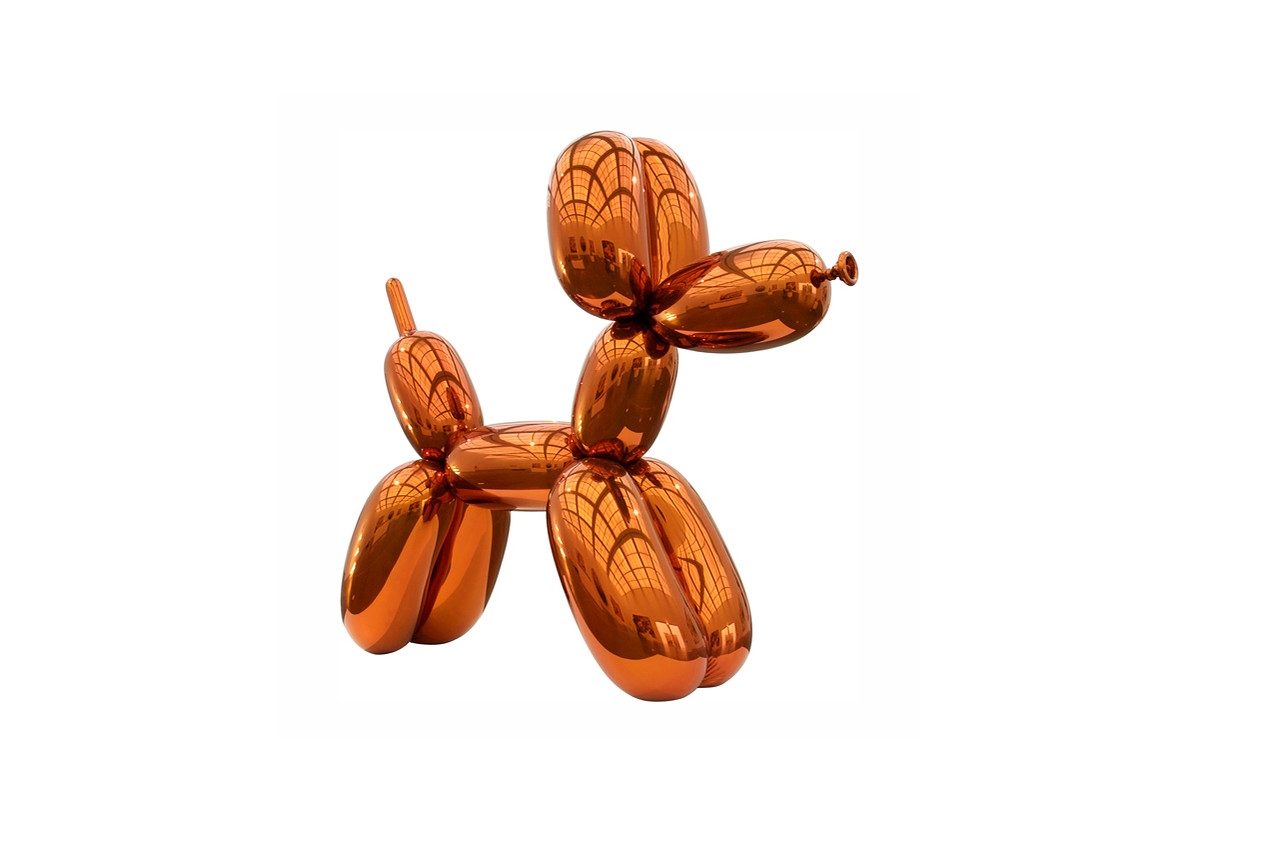By the time this column is in print, it’s quite possible that the record for the most expensive work by a living artist ever sold will have been broken. That record either still does or did belong to Gerhard Richter’s Domplatz Mailand (1968), which sold for $37 million just this past May, but Jeff Koons’s Balloon Dog (Orange) (1994–2000), with a low-end estimate of $35m and a high of $55m, may now have surpassed it.
What does this mean? Probably very little if we think of purchases like these as the ‘trophy hunting’ of an exceedingly small capitalist class. Confirming the masses of capital that the very wealthy have available to spend on assets such as art will be news to no one. So why bring it up? Because it is interesting to think about just what kind of assets these works of art are.
According to Christie’s Jeff Koons’s Balloon Dog ‘has become an icon of Popular vernacular’
Now, to opponents of the term ‘asset’ being used as a description of works of art: grow up. Even when works of art were not selling for many millions of dollars, they were assets. The works you have traded with other artists or that you have bought, the works that belong to you, that you own – these are assets, pure and simple. The works sitting in public trust in our museums are assets, even if they don’t enter into the accounting as such.
Wishing it weren’t so, dismissing the language (which is in fact very precise; ‘art’ is the loose term here) or continuing to trot out classical or eighteenth-century aesthetic theories of art’s purity or nonutility are examples of intellectual laziness and blinkered thinking. Art is many things, and an asset is one of them.
What kind of asset is a Koons’s Balloon Dog or a Richter painting, then? One definition, whose author I’ll withhold for the moment, would hold that they are ‘assets that will never produce anything, but that are purchased in the buyer’s hope that someone else will pay more for them in the future… This type of investment requires an expanding pool of buyers, who, in turn, are enticed because they believe the buying pool will expand still further. Owners are not inspired by what the asset itself can produce but rather by the belief that others will desire it even more avidly in the future.’
Even when works of art were not selling for many millions of dollars, they were still assets
This is a reasonable description of the way we think about works of art, in particular expensive ones like the Richter and the Koons. It could be objected that such works of art, though assets, are not ‘investments’, strictly speaking. Art, as the economists say, is a ‘consumption good’. And these works were bought for no other reason than that they satisfied the buyer. That may be, but remember that both of the works under discussion are in the secondary market.
The Koons was originally sold by Anthony d’Offay to Peter Brant in the late 1990s for a reported $1m as part of the financing of the larger Celebration series, of which Balloon Dog is a part. And the Richter has gone on the block before, at Sotheby’s in London back in 1998, where it sold for $3.3m. In other words, these works were bought with some expectation that there would be a ‘future’ in which ‘others’ would ‘desire’ these works even more ‘avidly’ than before. From the other direction, it could also be objected that these works ‘produce’ aesthetic experiences for their beholders, or happiness in their owners, or some such. But it beggars belief to think that selling the works at a loss wouldn’t find the seller thinking hers was a bad investment.
Balloon Dog is ‘about celebration and childhood and colour and simplicity – but it’s also a Trojan horse’
It’s helpful to note that, as the author of the definition above points out, ‘the major asset’ of this kind is not in fact art but gold, and it is also helpful to point out that the author is Warren Buffett. Buffett of course is one of the most successful and richest investors in the world, all because of ‘value investing’, which means, in his words, the ‘transfer to others of purchasing power now with the reasoned expectation of receiving more purchasing power in the future’. In Buffett’s world, this means transferring purchasing power to things like businesses and farmland, investments in entities that produce. Little wonder that Buffett is not an art collector of any note.
‘once I had control of the medium I chose the balloon dog that I felt was really the best suited to become “Balloon Dog”’
But if the asset that art most resembles is gold, the prime motivation for buying it, at least according to Buffett, is fear – fear that capital invested anywhere else, and in currency-backed securities in particular, is a bad bet. Currency is only as good as the credibility of the country that issues it, after all, and when countries such as the US – whose currency is the global reserve – print money to shore up their credit and labour markets, and then threaten to default on their debts, those currencies don’t look safe, and so the search for ‘harder’ assets, less ‘scary’ ones, begins. You can’t print more gold, the theory goes, so it must be safer, just as long as someone else is more scared than you. And it’s easier to bet on someone else’s fear than it is to bet on your own conviction in the productive value of an investment.
About the buyers of the Richter and the Koons, few will have said that they were or are scared, but in a sense that is what they are, if we take such assets to be ‘as good as gold’.
This article was first published in the December 2013 issue.
